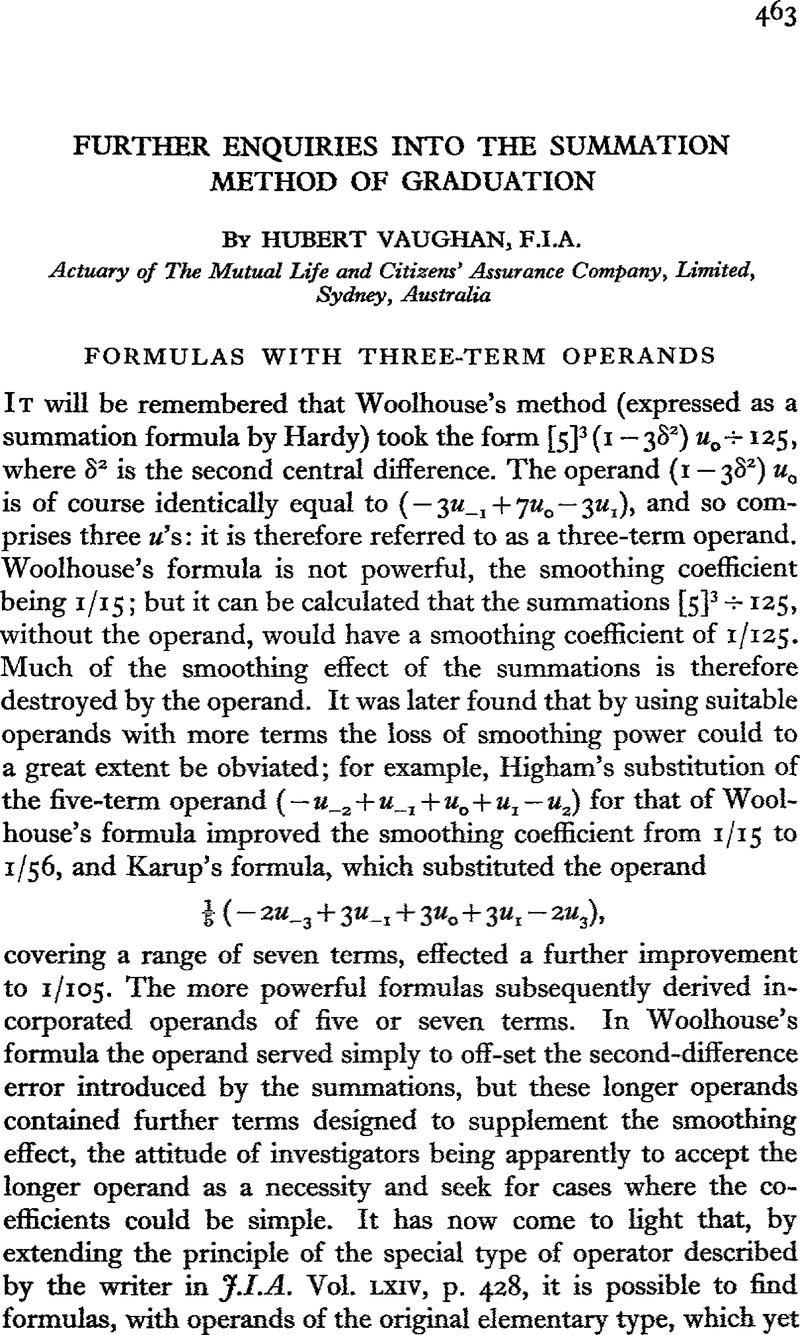Article contents
Further Enquiries into the Summation Method of Graduation
Published online by Cambridge University Press: 18 August 2016
Abstract

- Type
- Other
- Information
- Copyright
- Copyright © Institute and Faculty of Actuaries 1935
References
page 465 note * J.I.A. Vol. XLI, pp. 71 and 403.
page 472 note * J.I.A. Vol. XLV1II, pp. 405–6.
page 473 note * See The Calculus of Observations, by Whittaker and Robinson, p. 303; also T.A.S.A. Vol. XXY, p: 29; and T.F.A. Vol. xi, pp. 1, 27, 31.
page 474 note * Except for a small distortion at the beginning and end of the series, where the “terminal conditions” have their greatest effect. (Cf. Aitken, , T.F. A. Vol. XI, p. 35.Google Scholar)
page 474 note † T.F.A. Vol. xi, p. 20. The result quoted applies only to ϵ = ·01. It should be noted that the expressions given by Gwilt, for this and other values of ϵ, do not relate to the strict Whittaker method but to a modification of it which ignores the terminal conditions.
page 479 note * See Appendix II—Editorial note on an extension of a method of graduation described by G. F. Hardy.
page 480 note * See T.F.A. Vol. xI, p. 36; J.I.A. Vol. XLI, p. 382 and p. 234.
page 482 note * [It must be borne in mind that the Carlisle q's involve systematic departures from the true curve (ante, pp. 477, 480; King, G., J.I.A. Vol. xxIv, p. 302)Google Scholar; and in such conditions it is not clear that the smallness of the deviations has its usual merit as a test of good graduation. A mathematical curve involving a few constants based on the whole mass of values might give better results than a curve following the erroneous values too closely. Jt. Eds.]
page 490 note * Perhaps this principle must be accepted with caution. The fifth-difference formula would be used to avoid systematic distortion arising from the long ranges, but a minimum or very small smoothing coefficient of fifth differences might result in an undue amount of small local waves in the graduated table.
page 491 note *
![]() can be resolved into n factors of the first degree in E, and if any of these factors were superfluous we could re-write the given difference equation as one of lower order, on which basis the theorem would still hold good, some of the α's becoming zero.
can be resolved into n factors of the first degree in E, and if any of these factors were superfluous we could re-write the given difference equation as one of lower order, on which basis the theorem would still hold good, some of the α's becoming zero.
page 492 note * ux can be expressed in terms of any other n u's, successive or otherwise, but the more obvious relation stated above is sufficient for the argument. It may also be mentioned that it is not necessary for the terms in the operand to be consecutive.
page 492 note † We use here the convenient and recognized notation in which a determinant is represented by the terms in its leading diagonal.
- 1
- Cited by




